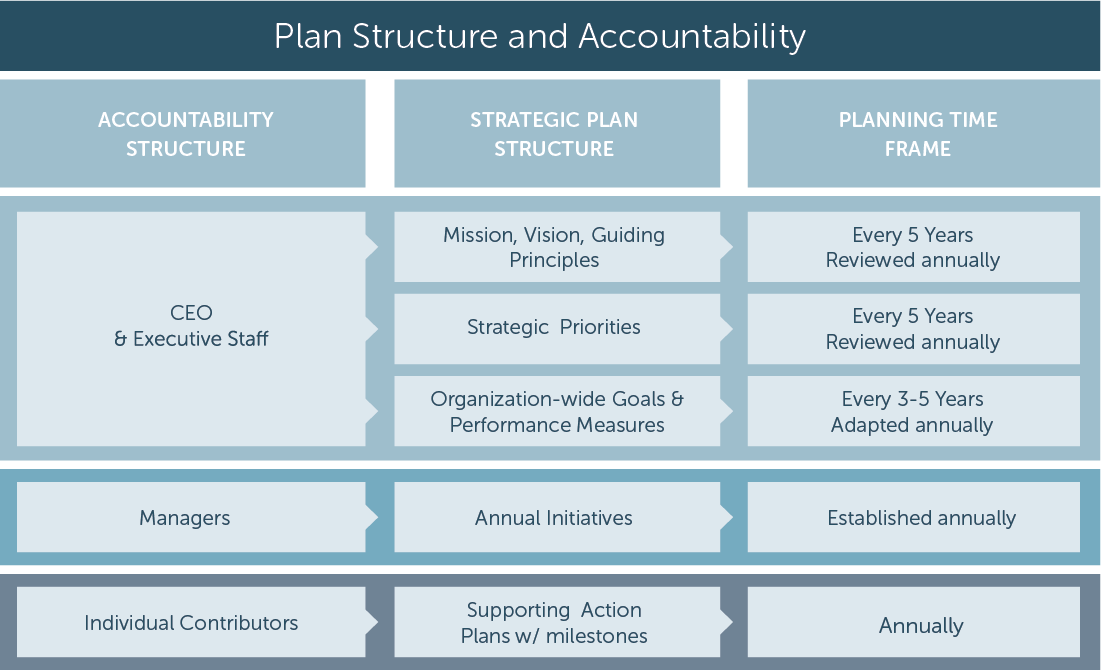Creating a structured strategic plan is essential to the success of a planning process. But, creating responsibility at each level of the plan is absolutely pivotal to the success of a plan.
One of the most frequent questions we coach our clients through is, “how do I structure my plan and who should be responsible for what?” While the answer is usually unique to each organization, we’ve broken down the planning elements and organization structure to give you a handy visual to help guide you to structure your plan and create accountability for plan creation and execution throughout your organization.

Now that you have the overall view, let’s take a deeper dive into the elements.
CEO and Executive Team
The CEO and executive team play a big role in setting the foundation of a strategic plan by creating guiding organizational principles, articulating the strategic areas of focus, and creating the long-term goals that guide the organization to create aligned goals and actions to achieve its vision of success. The executive team is responsible for:
Mission, Vision, & Guiding Principles – These are the core foundational elements to your plan that tell your organization who you are, where you’re going, and how you’re going to operate. These principles encompass your organization’s ethos and help serve as the foundation to your long-term strategy to achieve your vision of success. These are updated every 5 years and reviewed by the executive team annually.
Strategic Priorities – These are the long-term areas of strategic focus that are designed to achieve your vision of long-term success. These create the different pillars of your plan and articulate the focus for each area. These are updated every 5 years and reviewed by the executive team annually.
Organization-Wide Goals and Performance Indicators – These are the long-term goals and performance indicators that begin to put action to paper to help achieve strategic priorities. These goals and actions have a lifespan of 3-5 years, but are reviewed and adapted annually.

Managers/Department Leaders
Managers and department leaders don’t have as much responsibility during the plan creation process, but drive your organization to create the annual department goals that support the organization’s goals and performance indicators. Managers and department leaders are responsible for:
Annual Goals – Department leaders and managers create and execute the annual department goals that align and support the organization-wide goals and performance indicators. These goals are established annually.

Get the Free Guide for Writing Better SMART Goals
Individual Contributors
Individual contributors are your soldiers on the ground tasked with helping drive your strategy from the ground up. They play an essential role in your day-to-day operations, but also in the creation and execution of your strategy. Individual contributors are responsible for:
Supporting Action Items with Milestones – Individual contributors create the supporting action plans with milestones that drive the day-to-day focus on strategy. Each of these action plan milestones tally up to achieve your annual goals. These action plans are completed annually.

Final Thoughts
As you work through building your strategic plan at every level of your organization, it’s important to remember that every player at the table is a key puzzle piece to your plan. Individual contributors play just as big a role as someone on the executive team – and the cascaded responsibility and execution of a plan is what makes strategy execution possible.












Thank you for the highly useful information.
Thank you guys it’s good staff I am getting